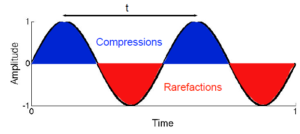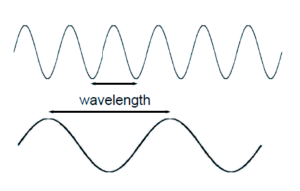Search Topic
What is sound wave
Air particles do not travel in any motion. They oscillate around a point in space. The rate of this oscillation is known as the frequency of the sound wave and is denoted in cycles per second (cps) or hertz (Hz). The amount of compression/rarefaction of the air is the amplitude of the it.
Sound is a vibration that generates an acoustic wave. The distance between consecutive peaks of compression or rarefaction is the wavelength of the sound wave (denoted by λ). Fast traveling wave results on a greater λ

If the frequency of oscillation is fixed, then the wave is periodic (with period t, and frequency 1/t).
The simplest periodic wave is a sinusoid because of the inverse relationship, the higher the frequency, the shorter the time between oscillations.
Humans frequency range: 20-20kHz (20,000 Hz).

The speed of a wave (c), depends on the density and elasticity of the medium (and thus in its temperature).
- In air, at 70 °F (21 °C), c = 769 mph (344 meters/s). This is slow when compared to most solids.
- If the speed c and the oscillation frequency f are known, the wavelength can be calculated as: λ = c/f









